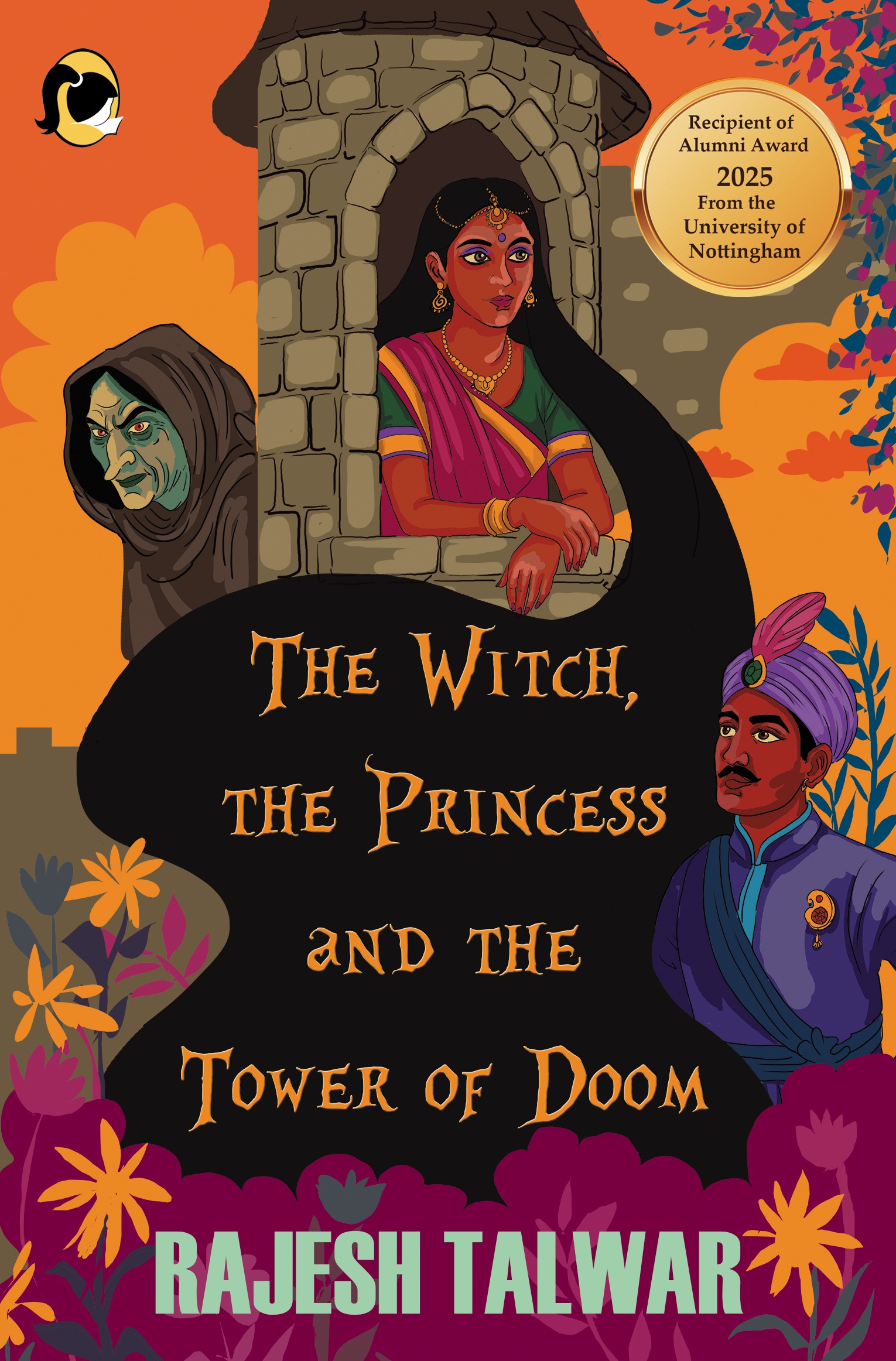.jpeg?alt=media&token=d4262718-59b5-4991-a406-d202b2193b1e)
Book Review : THE WITCH, THE PRINCESS AND THE TOWER OF DOOM by Rajesh Talwar
Not Your Usual Fairy Tale: Rajesh Talwar Reinvents the Princess Story

Author Rajesh Talwar offers a captivating and contemporary take on the traditional Western fairy tale of Rapunzel in THE WITCH, THE PRINCESS AND THE TOWER OF DOOM, engrossing readers in a rich, magical world influenced by Eastern customs. This story is both familiar and surprisingly fresh, with flowing black hair in place of golden locks and a complicated witch in place of the stereotypical antagonist.
Known for his versatility, Talwar is a prolific author with 42 books to his credit. His body of work includes plays, novels, children's books, self-help, and non-fiction on important legal, cultural, and social justice issues. He applies the same level of narrative sophistication and thoughtful depth to the realm of children's fantasy with The Witch, The Princess.
The story, which takes place in the made-up kingdom of Pandya, starts when the benevolent king and queen make a last-ditch bargain with Churailamma, a strong and feared witch. According to the acceptance, the witch returns years later to take Princess Pihu and locks her up in the sinister Tower of Doom.
A traditional fairy tale is hinted at in the opening scene, but Talwar swiftly defies expectations. The narrative examines Pihu's inner journey rather than just a prince's valiant rescue. Pihu learns, develops, and starts to comprehend the complexity of the world—and of her captor—instead of giving up in her seclusion. After being introduced as a cliched witch, Churailamma develops into a complex, mysterious character. Is she a villain? Or just misinterpreted?
Pihu’s strength, curiosity, and evolving perspective make her a refreshing heroine. Her agency is central to the story, challenging the outdated trope of the helpless princess. When a prince finally appears, he is not the flawless, swashbuckling hero readers might expect. Instead, he is fragile, physically weak, and in need of help himself. Their developing relationship adds emotional depth and subtly redefines the idea of rescue—not as a one-sided act of bravery, but as mutual support and partnership.
As the plot unfolds, the story deepens. A mysterious illness begins to spread across the kingdom. Suspicion naturally falls on the witch, but the narrative urges readers to look beyond the obvious. Could someone else be behind the chaos? Could the very person feared by all be the one who holds the cure?
Talwar deftly balances mystery and magic, crafting a tale full of surprises while subtly challenging assumptions. The characters are not confined to simplistic moral categories. The princess is brave and compassionate, the prince vulnerable yet determined, and the witch—possibly both wise and wicked—is far more than she first appears.
The prose is accessible yet lyrical, drawing younger readers into a world that is enchanting but never sugar-coated. Themes of empathy, resilience, and the dangers of prejudice are woven seamlessly into the narrative, making it as meaningful as it is entertaining.
Rajesh Talwar’s wide-ranging experience—spanning law, social justice, and the arts—enriches this children's tale with uncommon sensitivity and depth. His understanding of power dynamics, human motivation, and societal structures subtly informs the narrative without ever overwhelming the story’s charm.
This book is more than just a fairy tale—it’s a tale of transformation. It invites readers to question surface appearances, to find strength in vulnerability, and to see the world through a more compassionate lens. With its graceful storytelling, memorable characters, and thoughtful message, the book stands out as a modern classic in the making.
For readers—young and old—seeking enchantment with substance, Rajesh Talwar’s latest offering is a journey well worth taking.
Reviewer - Roopkamal Shrivastava, English lecturer.
Comments (0)
Please login to share your comments.